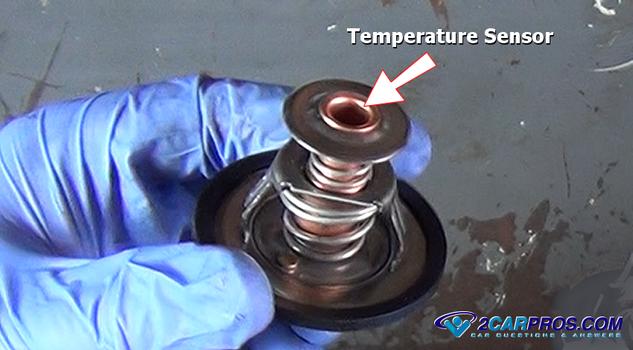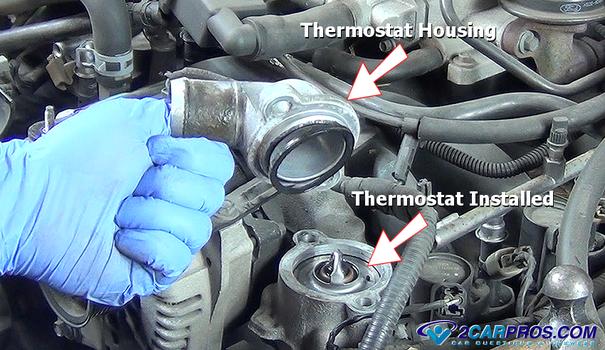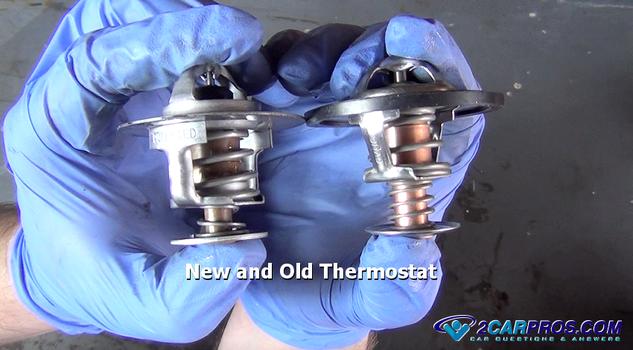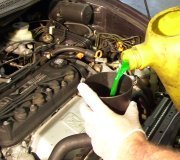The thermostat is located on the engine either at the inlet or outlet radiator
hose connections and is part of the cooling
system, this unit is designed to stop the flow of coolant in the cooling system
when the engine is cold. This is done to help the
engine warm up to optimum operating
temperature which improves efficiency and lowers emissions output. Once the engine
heats up to 195°F or 96°C the thermostat will open allowing the coolant to flow
into the radiator. At the bottom or
rear of the thermostat a spring is designed to return the plunger when cool, to
again stop the flow of the coolant. Some thermostats are equipped with a small bleed
hole which helps air to be released from inside the engine block allowing coolant
to reach the thermostat's temperature sensor. This sensor and activation plunger
is what responds to the hot engine coolant and expands pushing against the spring
to open the thermostat.

A housing is used to hold the thermostat in place while allowing the radiator
hose to be connected to it. When replacing
a thermostat a gasket is used to seal the thermostat housing helping the cooling
system build pressure and avoid leaks.
A thermostat maintains engine temperature as it opens and closes throughout the
engine's operation cycle.

A thermostat is a normal service item that when fails it will either stick closed making the engine overheat quickly, or stick open causing the engine to warm up slowly, which will trigger a check engine light and cause the heater not to work.
Thermostat Test
Prepare a pan of boiling water deep enough to cover the thermostat completely, gently drop the thermostat in, observe the plunger, it should start to move and open completely within 45 seconds, if the plunger doesn't move the thermostat has failed, if the thermostat plunger is open when cold it has also failed. Inspect the condition of the main body of the thermostat, look for cracks or broken pieces and the valve to be closed. Avoid running an engine without a thermostat, this unit also acts as a system flow regulator, if coolant is allowed to travel too fast in the system, the heat exchange rate is reduced in the radiator and the engine will overheat. A thermostat consists of a main housing, a plunger valve with return spring, temperature sensitive wax inside the plunger which acts as the sensing and activation device.



